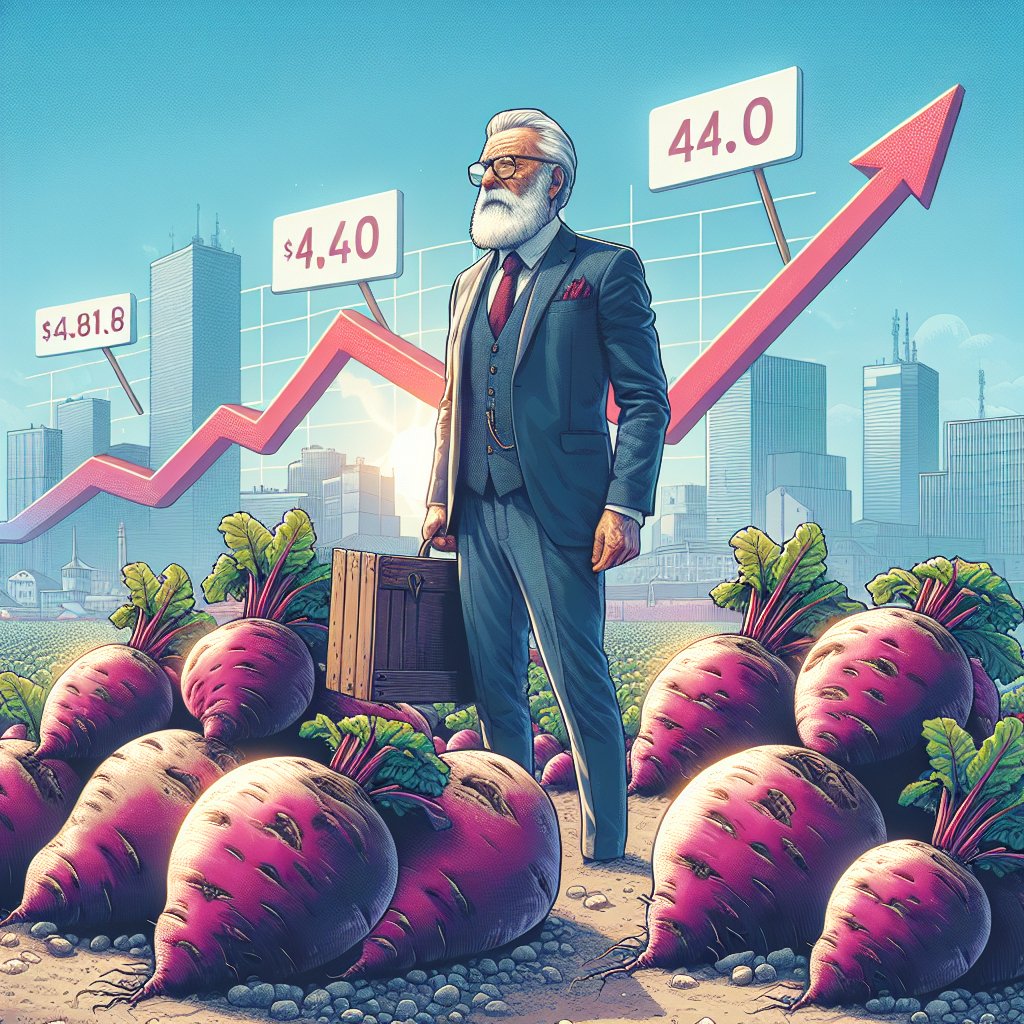The price of sugar beets in Poland has been subject to various fluctuations influenced by multiple factors, including market demand, production costs, and global trends. Understanding these dynamics is crucial for farmers, investors, and policymakers alike, as they navigate the complexities of the agricultural market. This article delves into the factors affecting sugar beet prices in Poland, examining historical trends, current market conditions, and future projections.
Historical Trends in Sugar Beet Prices
To comprehend the current state of sugar beet prices in Poland, it is essential to look back at historical trends. Over the past few decades, the sugar beet market has experienced significant changes, driven by both domestic and international influences.
Early Developments and Price Stability
In the early 2000s, Poland’s sugar beet industry was characterized by relatively stable prices, supported by a strong domestic market and government policies aimed at protecting local farmers. The European Union’s Common Agricultural Policy (CAP) played a significant role in stabilizing prices through subsidies and production quotas. During this period, sugar beet prices averaged around 30-40 PLN per ton, providing farmers with a reliable income source.
Market Liberalization and Price Volatility
However, the liberalization of the sugar market in the EU in 2006 marked a turning point for Polish sugar beet prices. The removal of production quotas and the introduction of free market principles led to increased competition and price volatility. Farmers faced challenges as prices fluctuated significantly, sometimes dropping below production costs. For instance, in 2010, prices fell to around 25 PLN per ton, causing financial strain for many growers.
Recent Trends and Recovery
In recent years, sugar beet prices have shown signs of recovery, driven by rising global demand for sugar and biofuels. By 2020, prices had rebounded to approximately 50 PLN per ton, reflecting a more favorable market environment. Factors such as increased sugar consumption in emerging markets and the growing popularity of bioethanol production have contributed to this upward trend.
Current Market Conditions and Influencing Factors
As of 2023, the sugar beet market in Poland is influenced by a combination of domestic and international factors that continue to shape pricing dynamics. Understanding these elements is vital for stakeholders in the agricultural sector.
Domestic Production and Weather Conditions
One of the primary factors affecting sugar beet prices is domestic production levels. Weather conditions play a crucial role in determining crop yields. In recent years, Poland has experienced varying weather patterns, including droughts and excessive rainfall, which have impacted sugar beet production. For instance, the 2021 growing season saw a significant reduction in yields due to unfavorable weather, leading to a temporary spike in prices as supply tightened.
Global Market Trends
Global sugar prices also have a direct impact on the domestic market. As countries like Brazil and India ramp up their sugar production, fluctuations in global supply can influence local prices. Additionally, the increasing demand for sugar in the food and beverage industry, as well as the rising interest in biofuels, has created a more competitive market environment. In 2022, global sugar prices reached a decade-high, prompting Polish farmers to capitalize on the favorable conditions.
Government Policies and Support
Government policies continue to play a significant role in shaping the sugar beet market. The Polish government, in collaboration with the EU, has implemented various support measures aimed at stabilizing prices and ensuring fair compensation for farmers. These measures include subsidies, investment in research and development, and initiatives to promote sustainable farming practices. Such policies are crucial in maintaining a competitive edge in the global market.
Future Projections and Challenges Ahead
Looking ahead, the future of sugar beet prices in Poland remains uncertain, with several challenges and opportunities on the horizon. Stakeholders must remain vigilant and adaptable to navigate the evolving landscape.
Technological Advancements and Sustainability
One of the key opportunities for the sugar beet industry lies in technological advancements. Innovations in farming techniques, pest management, and crop genetics can enhance productivity and reduce costs. Additionally, the growing emphasis on sustainability and environmentally friendly practices may open new markets for Polish sugar beet producers. As consumers become more conscious of their environmental impact, there is potential for increased demand for sustainably produced sugar.
Market Competition and Global Dynamics
However, competition from other sugar-producing countries poses a significant challenge. As global sugar prices fluctuate, Polish farmers must remain competitive to secure their market share. The ongoing geopolitical tensions and trade policies can also impact export opportunities, further complicating the market landscape.
Conclusion
In conclusion, the price of sugar beets in Poland is influenced by a myriad of factors, including historical trends, current market conditions, and future projections. While recent years have seen a recovery in prices, challenges such as weather variability, global competition, and changing consumer preferences will continue to shape the industry. By staying informed and adaptable, stakeholders can navigate the complexities of the sugar beet market and work towards a sustainable and profitable future.




